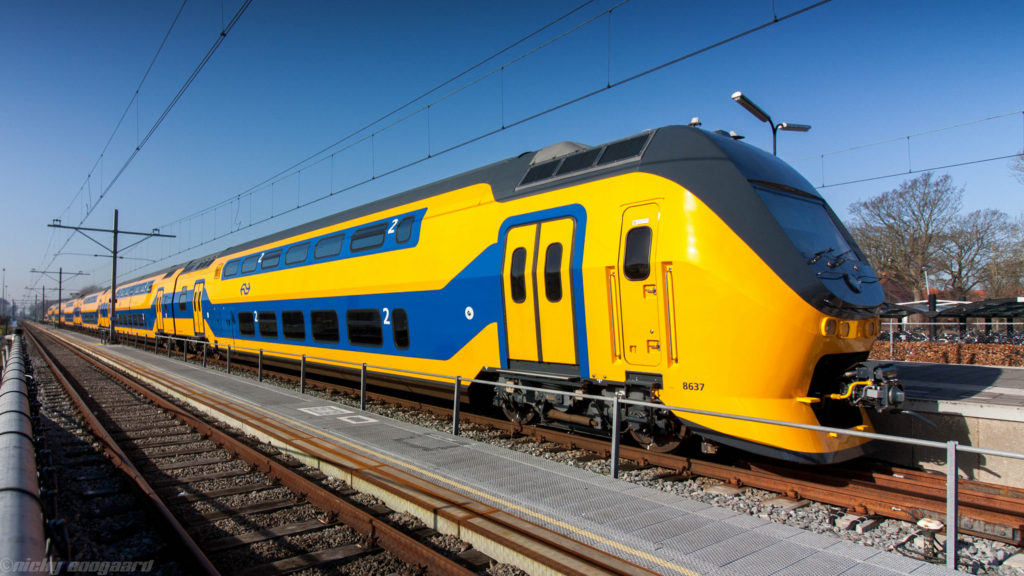Wind Energy And Railways: Exploring The Potential Of Wind-Powered Trains

Table of Contents
The Technological Feasibility of Wind-Powered Trains
The concept of wind-powered trains might seem futuristic, but significant progress is being made in exploring different approaches to harnessing wind energy for train propulsion.
Harnessing Wind Energy for Train Propulsion
Several innovative methods are being investigated:
-
Wind turbines integrated into train design (onboard generation): This approach involves incorporating small, lightweight wind turbines directly onto the train itself. These turbines would capture wind energy during the train's movement, supplementing the primary power source or acting as a supplementary power source for onboard systems. Challenges include optimizing turbine design for varying wind speeds and integrating them seamlessly into the train's aerodynamics.
-
Wind farms along railway lines providing electricity to the train via overhead lines: This method utilizes established wind farm technology alongside existing railway infrastructure. Wind farms located strategically along railway lines would generate electricity, which is then fed to the trains via the overhead catenary system. This approach benefits from established wind energy infrastructure and existing power transmission technology.
-
Hybrid systems combining wind with other renewable sources (solar, battery): A hybrid approach offers enhanced reliability and efficiency. Combining wind energy with solar panels on the train and advanced battery storage systems can mitigate the intermittency of wind power, ensuring a consistent power supply even in low-wind conditions. This approach offers greater resilience and reduces reliance on a single renewable source.
Current Technological Advancements and Research
While still in the early stages of development, several promising projects are underway. Researchers are exploring advanced materials for lightweight, high-efficiency wind turbines suitable for train integration. Significant breakthroughs are needed in energy storage technology to efficiently capture and store the intermittent energy produced by wind turbines. For example, some research focuses on supercapacitors, which offer faster charging and discharging times compared to traditional batteries. Furthermore, improved energy transmission systems are crucial for efficient power delivery from wind farms to trains via overhead lines. This includes investigating advanced high-voltage direct current (HVDC) transmission technology to minimize energy loss during transmission.
Environmental Benefits of Wind-Powered Trains
The shift towards wind-powered trains offers substantial environmental advantages:
Reducing Carbon Emissions
Replacing fossil fuel-powered locomotives with wind-powered alternatives drastically reduces greenhouse gas emissions. Studies suggest that a complete transition could decrease railway-related CO2 emissions by up to 80%, significantly contributing to global climate change mitigation efforts. This reduction in carbon emissions is crucial for achieving net-zero targets.
Improving Air Quality
Wind-powered trains eliminate the air pollution associated with diesel locomotives. The improved air quality in urban and rural areas surrounding railway lines would lead to significant public health benefits, reducing respiratory illnesses and other health problems linked to air pollution. This is especially crucial in densely populated areas with high traffic density near railways.
Minimizing Noise Pollution
Wind-powered trains are significantly quieter than conventional diesel or even electric trains, leading to a reduction in noise pollution along railway lines. This enhanced quietness improves the quality of life for communities near railway tracks and reduces the negative impacts of transportation noise.
Economic Aspects and Infrastructure Requirements
The transition to wind-powered trains involves significant economic considerations and infrastructure adaptations:
Initial Investment and Long-Term Costs
The initial investment in research, development, and infrastructure upgrades for wind-powered trains is substantial. However, long-term cost savings can be achieved through reduced fuel costs and lower maintenance expenses compared to conventional trains. A comprehensive cost-benefit analysis is crucial to assess the economic viability of this technology.
Infrastructure Adaptations
Implementing wind-powered trains requires modifications to existing railway infrastructure. This includes:
- Installation of wind turbines along railway lines or on trains themselves.
- Upgrades to the electrical grid to handle the increased power demand.
- Potential modifications to train designs to accommodate wind turbine integration.
Job Creation and Economic Growth
The development and implementation of wind-powered train technology offer significant opportunities for job creation in various sectors, including manufacturing, installation, maintenance, and research. This can stimulate economic growth and innovation in the renewable energy and transportation sectors.
Challenges and Future Prospects of Wind-Powered Trains
Despite the numerous advantages, several challenges need to be addressed:
Reliability and Consistency of Wind Power
Wind energy is intermittent, meaning its availability fluctuates depending on weather conditions. Addressing this intermittency requires effective energy storage solutions, such as advanced batteries or pumped hydro storage, and potentially hybrid systems incorporating other renewable energy sources.
Integration with Existing Railway Systems
Integrating wind-powered trains into existing railway systems requires careful planning and coordination. This involves considering the compatibility of the new technology with existing infrastructure and operational procedures.
Policy and Regulatory Frameworks
Supportive government policies and regulatory frameworks are essential to accelerate the adoption of wind-powered trains. This includes incentives for research and development, investment subsidies, and streamlined regulatory processes.
Conclusion
Wind-powered trains represent a significant step towards a greener and more sustainable future for our railways. While challenges remain in terms of technology, infrastructure, and economics, the potential environmental benefits and long-term economic advantages make further research and development crucial. The transition to wind-powered trains is not merely a technological advancement; it’s a vital step towards decarbonizing the transport sector and mitigating the effects of climate change. Let's invest in research and development to unlock the full potential of wind-powered trains and pave the way for a more sustainable future. Explore the possibilities of integrating renewable energy into our railways and embrace the era of green train travel.

Featured Posts
-
 Automakers Confused By Trumps Tariffs Impact And Implications
May 03, 2025
Automakers Confused By Trumps Tariffs Impact And Implications
May 03, 2025 -
 Toxic Chemical Residues From Ohio Train Derailment A Building By Building Analysis
May 03, 2025
Toxic Chemical Residues From Ohio Train Derailment A Building By Building Analysis
May 03, 2025 -
 Serious Injury Fan Falls From Outfield Wall At Cubs Game
May 03, 2025
Serious Injury Fan Falls From Outfield Wall At Cubs Game
May 03, 2025 -
 Hl Stkwn Hdhh Mwasfat Blay Styshn 6
May 03, 2025
Hl Stkwn Hdhh Mwasfat Blay Styshn 6
May 03, 2025 -
 Christina Aguileras Transformation Is She Defying Time
May 03, 2025
Christina Aguileras Transformation Is She Defying Time
May 03, 2025
Latest Posts
-
 View The Daily Lotto Results Thursday April 17 2025
May 03, 2025
View The Daily Lotto Results Thursday April 17 2025
May 03, 2025 -
 Latest Lotto Results Lotto Plus 1 And Lotto Plus 2 Draws
May 03, 2025
Latest Lotto Results Lotto Plus 1 And Lotto Plus 2 Draws
May 03, 2025 -
 Die Lottozahlen Der Ziehung Am 12 April 2025 6aus49
May 03, 2025
Die Lottozahlen Der Ziehung Am 12 April 2025 6aus49
May 03, 2025 -
 The Lottery Wednesday April 30 2025 Results
May 03, 2025
The Lottery Wednesday April 30 2025 Results
May 03, 2025 -
 Daily Lotto Results 18 04 2025
May 03, 2025
Daily Lotto Results 18 04 2025
May 03, 2025
